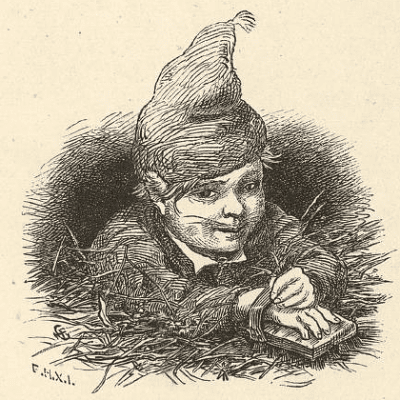 If gnomes exist, they would and should be mad. We have taken a fierce race and turned them into garden ornaments. Fortunately for us, there is little evidence they exist. We are free, therefor to turn them into cute kitsch for our amusement.
If gnomes exist, they would and should be mad. We have taken a fierce race and turned them into garden ornaments. Fortunately for us, there is little evidence they exist. We are free, therefor to turn them into cute kitsch for our amusement.
I am told that many people in Iceland believe in gnomes, but then many people in Iceland are atheists, so one can question their general commitment to reality and rationality. Yet correlation is not causation so I hesitate to make the connection.
Why do gnomes matter?
Occasionally, especially on social media, one meets a person that thinks belief in God is somehow akin to a belief in gnomes. Evidently because I am religious I believe in God, but should have dismissed God with the gnomes.
This strikes me as absurd, but then so does putting truck tires in gardens as planters and people do that as well.
Why is belief in God different than belief in gnomes?
First, while both are supernatural, God is different in kind from a gnome. God is the greatest possible being which means by definition only one God can exist. Gnomes are a race of supernatural creatures, but once (at least) had to have a Daddy Gnome and a Mommy Gnome to make the gnomes we (could) have around us.
Why does this matter? If God is the greatest possible being, then it might be that God necessarily exists. This is called the ontological argument and whether it is persuasive or not there are at least forms of the argument that are valid. On the other hand, if gnomes might exist or they might not exist. There are possible worlds where there are gnomes, though apparently not the actual world.
God is not like a gnome.
Second, gnomes have characteristics that show that if they ever did exist, they do not exist now. For example, gnomes live in gardens where they serve as the counterfoil to the fairy. There is no evidence, and almost no attempts, to suggest that gnomes live in gardens whatsoever.
On the other hand, if God exists, God is not tied to a particular place by definition. You would not be able to take a picture of God, even if God existed. He is spirit and immaterial. Do immaterial beings exist?
We know immaterial objects do: numbers and ideas are immaterial and they exist. What of persons? There is more evidence for the existence of ghosts and angels, than of gnomes. God is, however, in a class of being different than even ghosts or angels. If God exists, then He is the very ground of being.
Does God exist? Unlike gnomes, there are very serious people who think God exists and give reasons for His existence. Unlike gnomes, I have experienced God in my life. In fact, I felt the presence of God in class today. There is nothing comparable for the existence of gnomes.
Still isn’t that because of “religion?” This objection fails to grasp that people are religious for reasons and not just, because they were already religious. Atheists like my former colleague Professor Holly Ordway moved from atheism to religion due to reason and not to defend being religious. At one point of my life, I hated being Christian and wanted out, but reason did not let me go.
My emotions said go, but my mind said no.
Those who postulated gnomes, let them go easily, because there are no good philosophical arguments or universal human experiences to assert the existence of gnomes as there is for God.
Of course, people disagree about what God has said or is like, because like any big idea, experience, or complex personality disagreement, misunderstanding, or mistakes are possible. When it comes to gnomes, there is no active debate, intellectual activity, or ferment because gnome belief is going no place. We have no experiential data on which to disagree!
It is hard to misunderstand nothing!
Religion persists, in part, because of reason and evidence. Belief in gnomes faded outside of secular Iceland, because it had to do so based on reason. Since God really could exist, then blasphemy might really be a problem. Since gnomes almost surely do not exist, our appropriation of their images for fun in our garden is not.











